View Poll Results: What's your cuppa tea ??
- Voters
- 83. You may not vote on this poll
-
White
11 13.25% -
Green
28 33.73% -
Oolong
13 15.66% -
Pu erh
7 8.43% -
Masala Chai
2 2.41% -
Matcha
4 4.82% -
Rooibos
10 12.05% -
Herbal
8 9.64% -
Iced tea
17 20.48% -
Dirty Sock (white athletic)
1 1.20% -
Dirty Sock (black dress)
1 1.20% -
Black
40 48.19%
Multiple Choice Poll.
Results 1,151 to 1,160 of 5501
Thread: Tea anyone ??!!
-
10-17-2012, 07:19 PM #1151Modern Day Peasant


- Join Date
- May 2010
- Location
- Denver Rocky Mtn. High Rent,Colorado
- Posts
- 8,705
Thanked: 1160
Time for tea for me too Loon.Been up doin dang laundery and trying to motivate myself to make a pot...Tired today .
-
10-17-2012, 07:34 PM #1152
 Boba Milk Tea
Boba Milk Tea
Well the summer is over so I figured that I would give this tea a try warm... I must say, it's quite tasty...
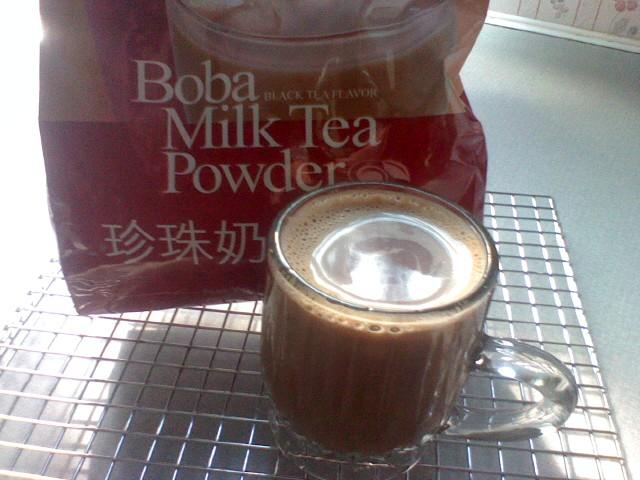 Life is really simple, but we insist on making it complicated...
Life is really simple, but we insist on making it complicated...
-
10-17-2012, 08:00 PM #1153
-
10-17-2012, 10:07 PM #1154

Sorry Bela, another question... Like everything else that I've seen on this site, there is no one answer. If it's razors, smoking pipes, or now, tea; one question and answer just goes to another. They branch out like the branches of a tree. To the point. Pu erh tea. I see you mention ripe pu erh tea. I see it online and they seem to boast the aged, tea. What do you mean by, ripe?? I'm so new at this, I wouldn't be able to tell the difference, or could I? It seems, the more I learn, the more lost I become. I'm going to try to make it to Chinatown in a week or two, I'd like to know at least a little before I go. I'm counting on their help while there, but, would feel better if I knew more.
Have a great day, donv
-
10-17-2012, 10:08 PM #1155
-
10-17-2012, 10:14 PM #1156Plausibly implausible





- Join Date
- May 2011
- Location
- Mount Torrens, South Australia
- Posts
- 5,979
Thanked: 485
I think I learnt that the other day, ripe (shou) has gone through an accelerated fermentation process. Raw (sheng) has taken longer to ferment. I read somewhere that they (the tea) can be buried in the ground to ferment. I think I'll try to buy some raw Pu erh tea today from the Asian markets, but I'm not sure I'll be able to make myself understood in regards to what I want. I'd rather buy it locally than online at the moment...
I'm sure Bela's answer will be more correct than mine though :-)
[EDIT] I found this on Wikipedia, it's very interesting, sorry for the long post...
Preparation
1.The first stage of preparation is known as 溫壺燙杯 (simplified: 温壶烫杯, Pinyin: wēn hú tàng bēi) literally "warming the pot and heating the cups." At this point the cups and pot are laid on the table. They are then warmed and sterilized with hot water, the excess is then poured away. When pouring from the cups in the Taiwanese Lăorénchá style, the wooden tweezers may be used instead of bare hands.
2.The second stage of the preparation is known as 鑒賞佳茗 (simplified: 鉴赏佳茗, Pinyin: jiàn shǎng jiā míng), literally "appreciate excellent tea." At this point those who would partake of the tea during the ceremony examine and appreciate its appearance, smell, and its other characteristics.
3.The third stage of the preparation is known as 烏龍入宮 (simplified: 乌龙入宫, Pinyin: wū lóng rù gōng), "The black dragon enters the palace" (this term in particular is used when Oolong tea is used for the ceremony). The teapot is filled with tea. For a 150 ml tea pot at least 15 grams of tea leaves are used, however depending on the size of the pot and the strength of the tea the pot may be filled between 1/2 and 2/3 full.
4.The leaves are now rinsed using hot water poured from some height above the pot, this is known as 懸壺高沖 (simplified: 悬壶高冲, Pinyin: xuán hú gāo chōng), "rinsing from an elevated pot". This is done by putting the teapot into the catching bowl. Water heated to the appropriate temperature for the tea is the poured into the pot until the pot overflows.
5.Any debris or bubbles which form on the surface are then scooped away gently to keep the tea from around the mouth of the pot which is then closed with the lid. This is known as 春風拂面 (simplified: 春风拂面, Pinyin: chūn fēng fú miàn), meaning "the spring wind brushes the surface."
6.At this point opinions differ as to what should be done with the tea. Some suggest that the tea be steeped for a short while, and discarded into the cups (重洗仙顏, simplified: 重洗仙颜, Pinyin: chóng xǐ xiān yán), meaning "bathe the immortal twice". This is in order that the temperature inside and outside of the pot is the same. Others recommend immediately pouring the first brew into all of the cups without allowing the tea to steep.
Brewing
1.Customarily this first brew is poured into the cups but is not drunk. This is known as 行雲流水 (simplified: 行云流水, Pinyin: háng yún líu shǔi), "A row of clouds, running water". It is essentially a slightly extended washing of the leaves.
2.The pot is then refilled with fresh hot water until the water reaches the mouth of the pot. This is known as 再注清泉 (Pinyin: zài zhù qīng quán), "Direct again the pure spring" or 回旋低斟 (Pinyin: húi xuán dī zhēn), meaning "pouring again from a low height." This second term refers to an important principle in the brewing of Chinese tea ceremonially: Gāo chōng dī zhēn (trad.: 高沖低斟, simp. 高冲低斟), "high to rinse, low to pour." This is because in the rinsing the tea is rinsed using the force of water poured from a height, whereas in the brewing water is poured closer to the leaves in order not to force the flavour from the leaves too rapidly.
3.The bubbles which may have formed on the surface are removed using the lid, and the pot is closed. The hot tea from the first brew is then emptied over the teapot's outside. This is known as 刮沫淋蓋 (simplified 刮沫淋盖, Pinyin: guā mò lín gài). Wait for 20 to 50 seconds, depending on the type and quantity of the tea used before beginning to serve the tea.
Serving
In a regular gongfucha ceremony the tea is poured evenly into the teacups, in a circular manner around the guests. In a Taiwanese style ceremony however, the tea is first emptied into the tea pitcher before being served to the guests. A quality oolong tea is good for anywhere from 4 to 8 brewings. Each subsequent pot follows the same procedure, but requires a slightly longer infusion time.Last edited by carlmaloschneider; 10-17-2012 at 10:29 PM.
Stranger, if you passing meet me and desire to speak to me, why should you not speak to me? And why should I not speak to you?
Walt Whitman
-
The Following 2 Users Say Thank You to carlmaloschneider For This Useful Post:
Mcduck (10-18-2012), NoseWarmer (10-18-2012)
-
10-17-2012, 10:15 PM #1157
-
The Following User Says Thank You to NoseWarmer For This Useful Post:
carlmaloschneider (10-18-2012)
-
10-18-2012, 06:01 AM #1158Senior Member


- Join Date
- Apr 2009
- Location
- Budapest / Hungary / Europe / Earth
- Posts
- 1,395
Thanked: 298
Don, some more additions from the Wikipedia:
"Pu-erh tea, also spelled as Pu'er tea is a variety of post-fermented tea produced in Yunnan province, China. Post-fermentation is a tea production style in which the tea leaves undergo a microbial fermentation process after they are dried and rolled. This is a Chinese specialty and is sometimes referred to as dark, or black tea (this type of tea is completely different from what in West is known as "black tea", which in China is called "red tea"). There are a few different provinces, each with a few regions, producing dark teas of different varieties. Those produced in Yunnan are generally named Pu'er, referring to the name of Pu'er county which used to be a trading post for dark tea during imperial China.
Pu'er is available as loose leaf or in various compressed forms as a tea brick. There is also the differentiation of ripened (shou) and raw (sheng) types. The shou type refers to those varieties that have gone through an accelerated post-fermentation process, while the sheng types are those in the process of gradual darkening through exposure to the environmental elements. Certain selections from either type can be stored for maturity before consumption. That is why some are labelled with year and region of production."
The other is here:
Pu-erh tea - Wikipedia, the free encyclopediaLast edited by fonthunter; 10-18-2012 at 06:05 AM.
Life is like a cup of tea... it's all in how you make it...
-
The Following User Says Thank You to fonthunter For This Useful Post:
NoseWarmer (10-18-2012)
-
10-18-2012, 07:11 AM #1159Plausibly implausible





- Join Date
- May 2011
- Location
- Mount Torrens, South Australia
- Posts
- 5,979
Thanked: 485
Well, I got some (I think). I had to visit two Asian supermarkets, and of course had very little idea what I was looking at. I did find some loose Pu erh in the first shop in a nice tin, but wanted the compressed type. Luckily, in the second supermarket I also found some Pu erh tea bags with the name on them in English, so I took the two takes they had to the counter with the tea bags. First I asked the Asian lady how to pronounce it (she said 'Poo yay') and then I pointed to the two cakes and asked if THEY were Pu erh. She said they were. I asked if they were what was called raw. She said something like she didn't know, because something or other. I gathered she was saying either she didn't drink it or she wasn't Chinese. She said the two types tasted different. Anyway, I got the one with the paper all around it so I could re-wrap it easily. A Chinese man (well, Asian) asked me if I liked Chinese tea. I replied that this was my first one. He looked at me rather contemptuously. I asked him if the tea I had was raw. He said it was. he said it was a very good tea.
I broke it apart when I got home and didn't bother cleaning it like I'd seen in a You Tube video. I used a small wooden knife to break a little off. I placed a fair amount in to my new small one cup glass tea pot with the glass infuser insert. I pre-heated the cup (I got it in a shop called 'little Tokyo') and tea pot. I rinsed the tea once (filled the cup then tipped it out) and then poured some more water in the pot and almost immediately poured it into the cup (maybe five seconds brewing time).
It tasted, um, different. Very earthy. I know this sounds really silly, but it would go well with a nice Chinese meal. I then had a second cup, a third and a fourth. With each one the liquor got darker. The brewing time for each cup was very minimal; I poured it almost immediately.
I quite like this, maybe more so than the Silver Needle tea I have (although that is a mix; not pure Silver Needle). This tea could really grow on me, esp if I got a nice bamboo tray (I wonder where you get them from?). I don't know if I imagined it, but this tea seemed to give me quite a buzz...
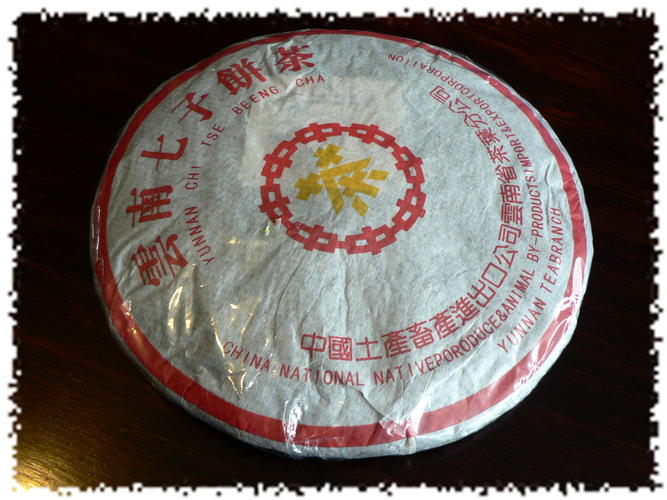
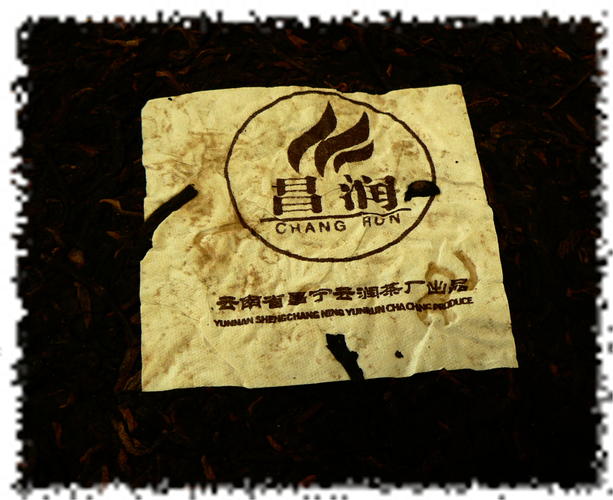
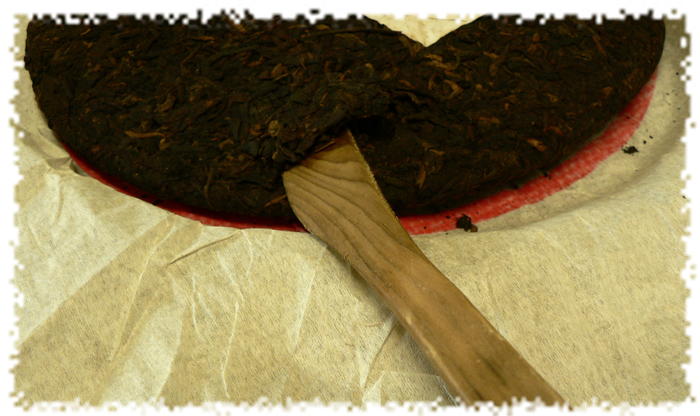
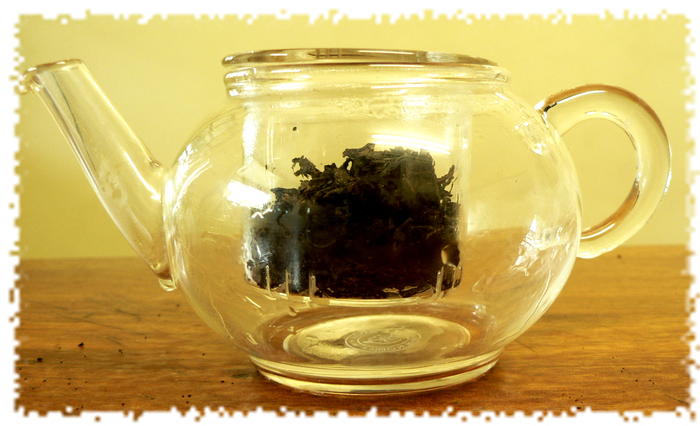
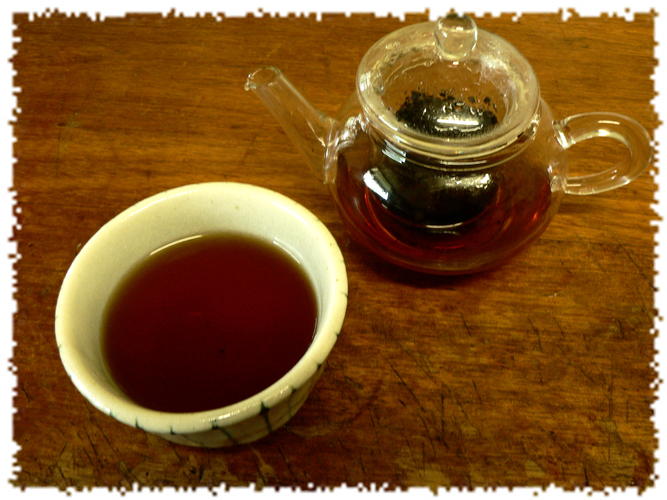 Stranger, if you passing meet me and desire to speak to me, why should you not speak to me? And why should I not speak to you?
Stranger, if you passing meet me and desire to speak to me, why should you not speak to me? And why should I not speak to you?
Walt Whitman
-
10-18-2012, 07:15 AM #1160Plausibly implausible





- Join Date
- May 2011
- Location
- Mount Torrens, South Australia
- Posts
- 5,979
Thanked: 485 Stranger, if you passing meet me and desire to speak to me, why should you not speak to me? And why should I not speak to you?
Stranger, if you passing meet me and desire to speak to me, why should you not speak to me? And why should I not speak to you?
Walt Whitman


 9033Likes
9033Likes LinkBack URL
LinkBack URL About LinkBacks
About LinkBacks






 Reply With Quote
Reply With Quote


